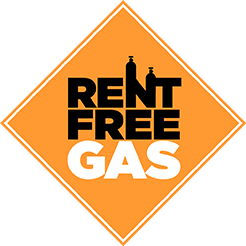Common uses of welding gas bottles
Rent free welding gas bottles are the easy and more cost-effective way to complete your welding projects. If you currently rent a bottle, but you don't have any welding projects on your bench for a month or two, you're literally wasting money every day. Make the easy leap to buying your own bottle, because rent free welding gas bottles are the answer! Common welding gas bottles and their uses: Argon Argon is used as an inert shielding gas, protecting your weld from contamination from the air. By properly using an Argon rent free welding gas bottle, typically used for a TIG welder, you ensure that air will not come in contact with the molten weld puddle and react with the metal. Argon 5-2 Different to Argon rent free welding gas bottles, Argon 5-2 can be used when you are welding mild steel, in the form of MIG welding. Basically, Argon 5-2 rent free welding gas bottles contain a mix of Argon and also CO2 and Oxygen. Oxygen Oxygen rent free welding gas bottles are used for what is called Oxygen & LPG welding (or Oxyacetylene), otherwise known as Oxy-fuel welding. Basically, this means you are using the oxygen in your rent free welding gas bottle as the combustion method. It's also great for bending, heating, surfacing and brazing, as the welder has a lot of control over the heat. CO2 Did you know that CO2 rent free welding gas bottles are most commonly used as a reactive gas for MIG welding, and are the only ones that can be used without an inert gas? CO2 rent free welding gas bottles are also a very inexpensive shielding gas, and provide for deep weld penetrations useful for welding thick materials. Nitrogen Another inert gas, like Argon or C02, is nitrogen, which in the form of a rent free welding gas bottle means you eradicate oxygen from the welding environment and prevent oxidation. Nitrogen rent free welding gas bottles are increasingly popular [...]

